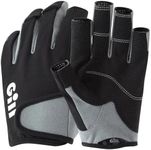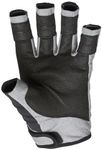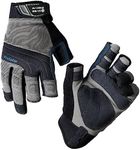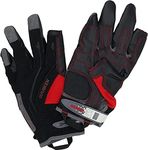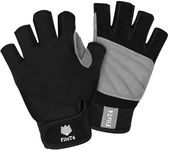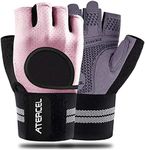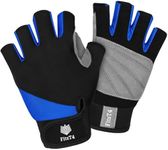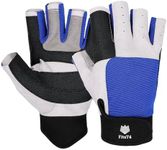Buying Guide for the Best Sailing Gloves
Choosing the right sailing gloves is essential for ensuring comfort, protection, and performance while out on the water. Sailing gloves are designed to protect your hands from blisters, rope burns, and the elements, while also providing a good grip. When selecting sailing gloves, consider the type of sailing you do, the conditions you sail in, and your personal preferences. Here are some key specifications to consider when picking the best sailing gloves for you.MaterialThe material of sailing gloves is crucial as it affects durability, comfort, and grip. Common materials include leather, synthetic fabrics, and neoprene. Leather offers excellent durability and grip but may require more maintenance. Synthetic fabrics are lightweight, quick-drying, and often more affordable. Neoprene is great for cold weather as it provides insulation and water resistance. Choose a material based on the conditions you sail in and your preference for feel and maintenance.
FitA proper fit is essential for comfort and functionality. Sailing gloves should fit snugly without being too tight, allowing for full range of motion and dexterity. Gloves that are too loose can cause blisters and reduce grip. When trying on gloves, ensure there is no excess material at the fingertips and that you can comfortably make a fist. Consider trying on gloves with the type of rope or equipment you use to ensure they provide the right feel and control.
Finger LengthSailing gloves come in full-finger and half-finger (or fingerless) designs. Full-finger gloves offer more protection and warmth, making them ideal for colder conditions or when you need extra protection. Half-finger gloves provide better dexterity and are more suitable for warmer weather, allowing for better tactile feedback. Choose the finger length based on the climate you sail in and the level of protection you need.
GripThe grip of sailing gloves is important for handling ropes and equipment. Look for gloves with reinforced palms and fingers, often made from materials like leather or synthetic rubber, to enhance grip and durability. Some gloves have additional grip patterns or textures to improve hold. Consider the type of sailing you do and the level of grip you need to ensure you can handle tasks efficiently and safely.
PaddingPadding in sailing gloves can provide extra comfort and protection, especially during long sailing sessions. Gloves with padded palms can help reduce fatigue and prevent blisters. However, too much padding can reduce dexterity and feel. Choose gloves with the right balance of padding based on how long you typically sail and how much protection you need for your hands.
Water ResistanceWater resistance is an important feature, especially if you sail in wet conditions. Some gloves are designed to be water-resistant or quick-drying, which can help keep your hands dry and comfortable. Neoprene gloves are particularly good for water resistance and insulation. Consider the typical weather and water conditions you sail in to determine how important water resistance is for your gloves.
BreathabilityBreathability is important for keeping your hands cool and dry, especially in warm weather. Gloves made from breathable materials or with ventilation features can help prevent your hands from getting sweaty and uncomfortable. If you sail in hot climates, prioritize gloves with good breathability to ensure comfort during long periods on the water.
